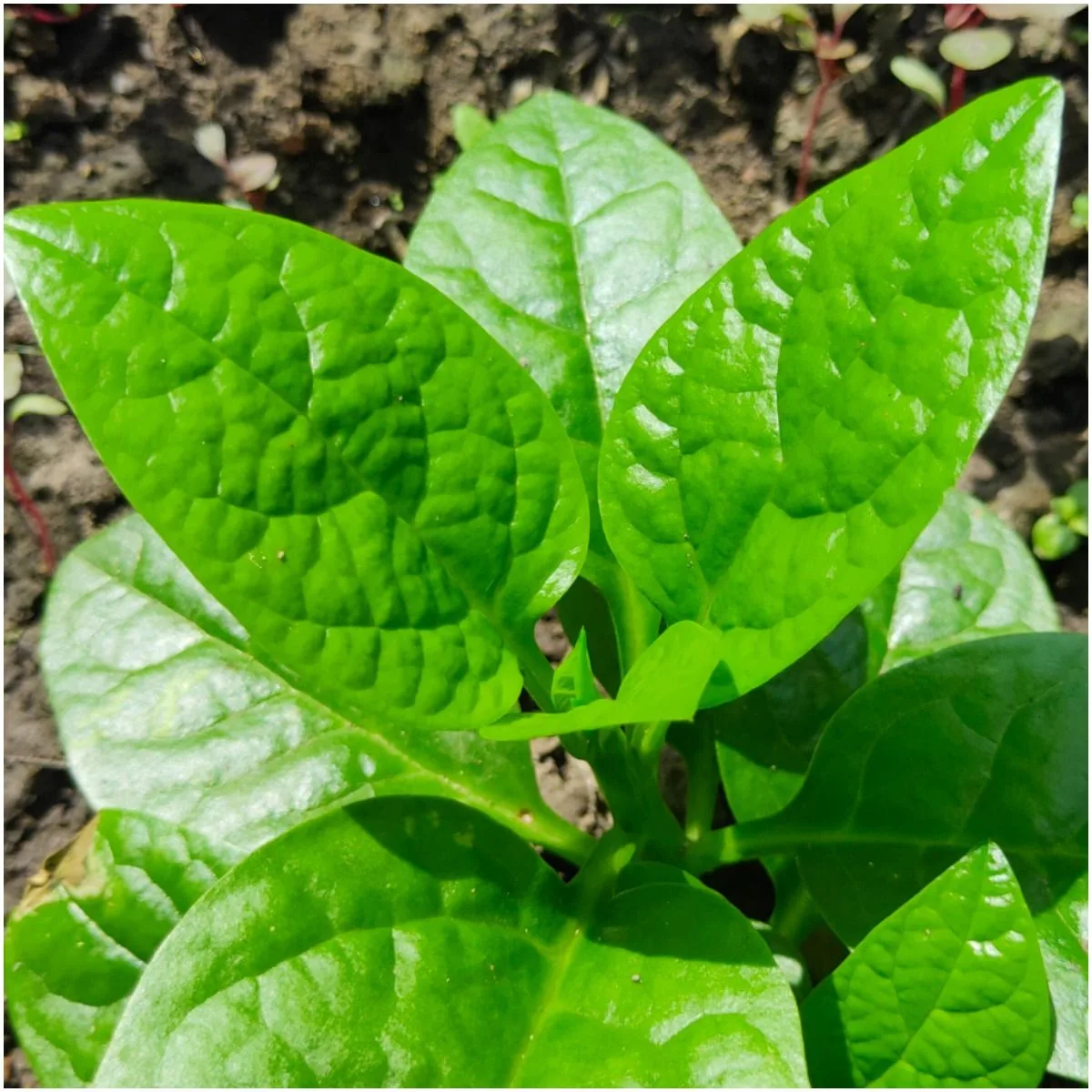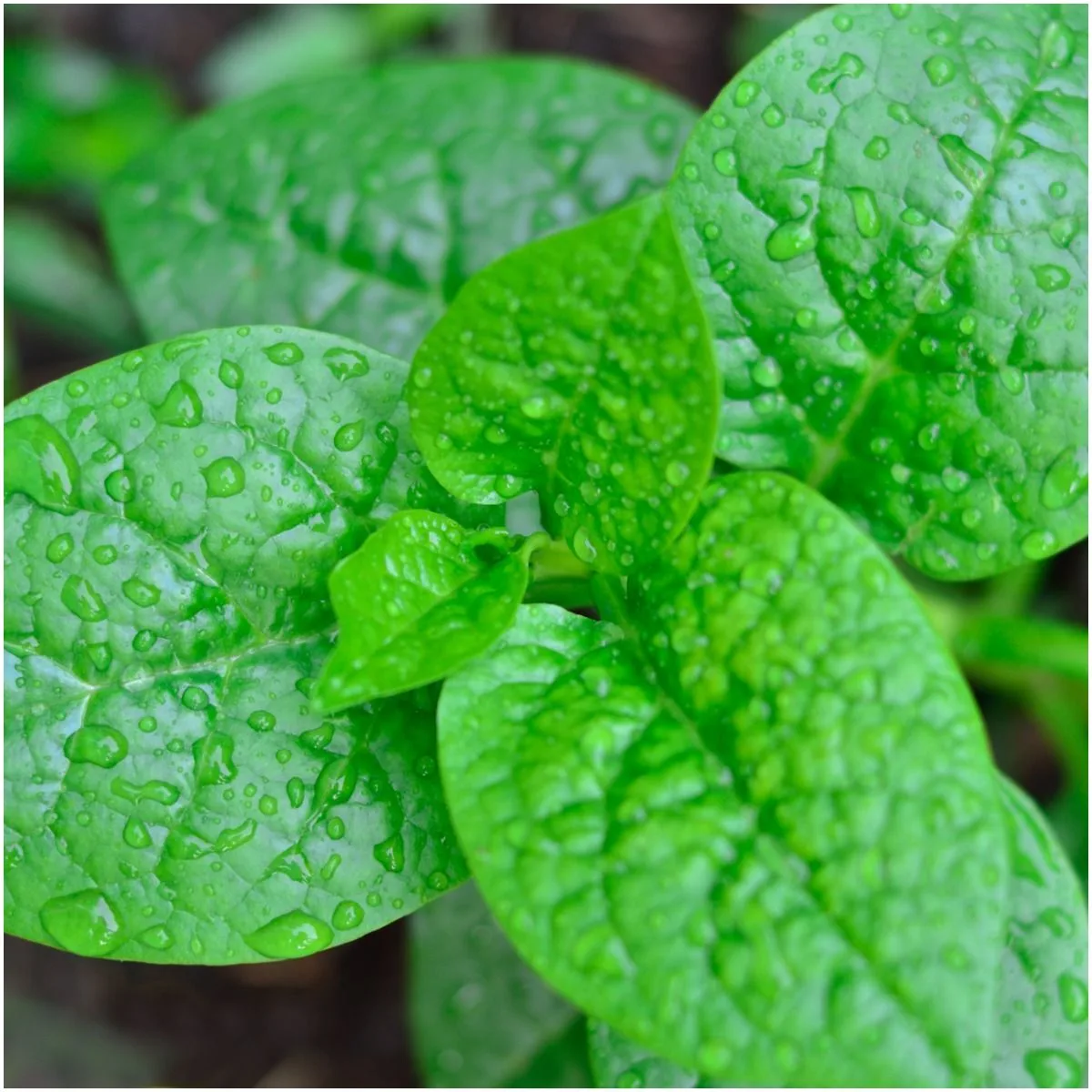What are the health benefits and side effects of Malabar spinach?
Introduction
Malabar spinach, also called Ceylon spinach, Indian spinach, or climbing spinach, is a member of the Basellacea family tree.
This leafy vine is native to tropical Asia and thrives in hot summer weather.
It grows best in full sun, however, it will also tolerate light shade.
Nutrition Facts
1 cup (44 grams) of cooked Malabar spinach contains:
- 10 calories;
- 0.9g Fiber – 4% daily value;
- 1.3g Protein – 3% DV;
- 509IU Vitamin A – 10% DV;
- 2.6mg Vitamin C – 4% DV;
- 0.0mg Thiamin – 3% DV;
- 0.1mg Riboflavin – 3% DV;
- 0.3mg Niacin – 2% DV;
- 0.0mg Vitamin B6 – 2% DV;
- 50mcg Folate – 12% DV;
- 0.1mg Pantothenic Acid – 1% DV;
- 54mg Calcium – 5% DV;
- 0.7mg Iron – 4% DV;
- 21mg Magnesium – 5% DV;
- 16mg Phosphorus – 2% DV;
- 113mg Potassium – 3% DV;
- 24mg Sodium – 1% DV;
- 0.1mg Zinc – 4% DV;
- 0.0mg Copper – 2% DV;
- 0.1 Manganese – 6% DV;
- 0.4mcg Selenium – 1% DV.
Note – when you eat spinach that has been heated, you will absorb higher levels of thiamin, zinc, calcium, iron, beta-carotene, zeaxanthin, and lutein, as they become more absorbable.
Health Benefits Of Climbing Spinach

Singkham/sHUTTERSTOCK
Lowers Blood Pressure
It is a good source of potassium, an essential mineral that can help reduce the effects of sodium in the human body.
In addition, potassium helps to ease tension in the blood vessel walls, leading to lower blood pressure.
This is good news for over 75 million American adults who suffer from high blood pressure (note – only 2% of US adults get the RDA amount of 4,700 mg of potassium).
Potassium is also an integral part of brain health, and it has been strongly associated with increased blood flow to the brain and heightened neural activity.
Improves Vision
It is a very good source of vitamin A in the form of beta-carotene.
That’s excellent news for your eyes.
Beta-carotene is actually a form of vitamin A found in plants which the body can convert into vitamin A.
Also, the phytochemicals in this green leafy vegetable help prevent macular degeneration, a chronic eye disease that causes a blind spot in the visual field or blurred vision.
Worldwide, over 170 million people are affected by macular degeneration, while in the US, there is a prevalence of 11 million individuals.
Common symptoms of macular degeneration include:
- difficulty recognizing faces;
- visual distortions, like – straight lines seeming bent;
- decreased intensity or brightness of colors;
- an increased blurriness of printed words;
- increased difficulty adapting to low light levels;
- the need for brighter light when doing close work;
- reduced central vision in your eyes.
Moreover, recent research has established that lutein and zeaxanthin, two important nutrients found in climbing spinach, work to prevent cataracts – a clouding of the lens in the eye that affects vision. Cataract is the leading disease that causes blindness in the United States.
READ MORE: Asparagus vs Broccoli
Cancer Protection
Studies show that consuming cruciferous vegetables and leafy green vegetables (such as – watercress, broccoli, spinach, cauliflower, Brussels sprouts, cabbage, turnip greens, mustard greens, kale, and collards) can substantially protect against the occurrence of numerous types of cancers, especially – breast, colon, and prostate cancers.
Its cancer-protecting properties are thought to come from the content of chlorophyll, a green pigment found in plants with anti-carcinogen and anti-cancer properties.
Additionally, chlorophyll helps bind together aflatoxins (poisonous carcinogens that are produced by certain molds), hydrocarbons, and other hydrophobic molecules that are linked with cancer and expels them out of the body, according to a review that was issued in the ”Nutrition Journal.”
Good For Weight Loss

Stock-Asso/Shutterstock
Spinach contains both insoluble and soluble fiber, both of which have beneficial effects on your health.
Both types of fiber are undigested, hence, they are not absorbed into the bloodstream.
Soluble fiber can help with weight loss through proper digestion since it adds bulk as the food passes through the digestive system.
In addition, soluble fiber lowers blood glucose levels as well as mitigates the effects of overheating. Insoluble fiber does not dissolve, but it will help you feel comfortable throughout the day.
READ MORE: Mung Beans (Vigna radiata) – Side Effects
Pregnancy

Syda Productions/Shutterstock
Ceylon spinach is useful for pregnant women due to its high content of folate (also referred to as vitamin B9), which ensures normal development of the baby’s nervous system.
Vitamin B9 also helps prevent neural tube defects, and serious birth defects of the brain and spinal cord.
Asthma Prevention
Asthma is a chronic disease that is described by recurrent attacks of wheezing and breathlessness.
This disease may affect over 350 million people worldwide, and its prevalence is rising.
People who regularly consume high amounts of certain nutrients (like – lutein, zeaxanthin, and beta-carotene) have a lower risk of developing asthma.
Enhances Mental Performance
Eating 3 servings of green leafy vegetables could slow mental decline by up to 40 percent, according to a 2015 study published in NCBI.
Anti-Inflammatory Properties
This green leafy vegetable has potent anti-inflammatory properties, which help to heal chronic inflammation in the cells and tissues of the body.
Heart Health
Climbing spinach contains nitrite (compounds found naturally in some foods), which cures the heart diseases linked with fat deposition.
READ MORE: Ginkgo Biloba vs Ginseng – Differences
Side Effects of Malabar Spinach

Manishankar Patra/Shutterstock
It contains a high amount of oxalate, that can bind with calcium and iron and cause your body to absorb less of these important nutrients.
However, eating foods rich in vitamin C (like – sweet pepper, tomatoes, limes, lemons, cabbage, onions, or sweet potatoes) along with spinach can boost the absorption of these minerals. Additionally, lightly cooking spinach reduces the oxalic acid content.
Taste
Although in a different family than spinach, the leaves taste just like regular spinach.
READ MORE: CQ10 – Benefits
Recipe
You can use this spinach in the same way you use regular spinach — lightly steamed or cooked, raw in salads, or used in soups, stews, and stir-fries.
Below is a recipe of spinach with chickpeas:
Ingredients
- 1 tbsp Himalayan salt;
- extra virgin olive oil;
- 3 ½ cups cooked chickpeas;
- ½ cup water (125 ml);
- 6 cups spinach;
- 3 tbsp sweet paprika;
- 1 head of garlic.
Instructions
- Cook the garlic in a saucepan with olive oil over medium heat until golden brown.
- Add the paprika, spinach, water, Himalayan salt and cook for five minutes.
- Add the cooked chickpeas and cook for another five minutes. Enjoy!
Featured image credit – Shutterstock
READ THIS NEXT: Swerve vs Truvia – Comparison
Sources https://examine.com/supplements/basella-alba/ https://www.tandfonline.com/doi/abs/10.1080/01904167.2017.1382530?
